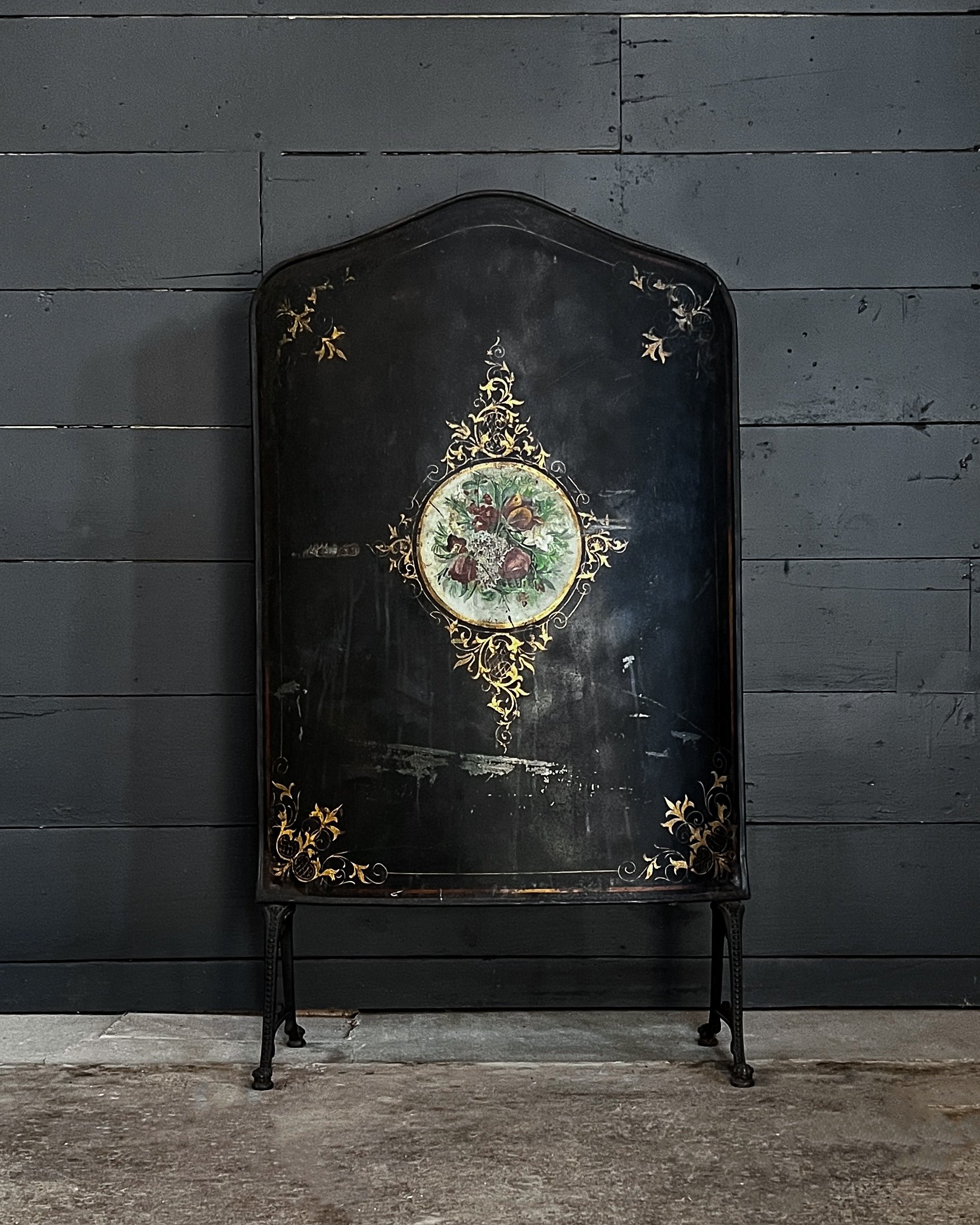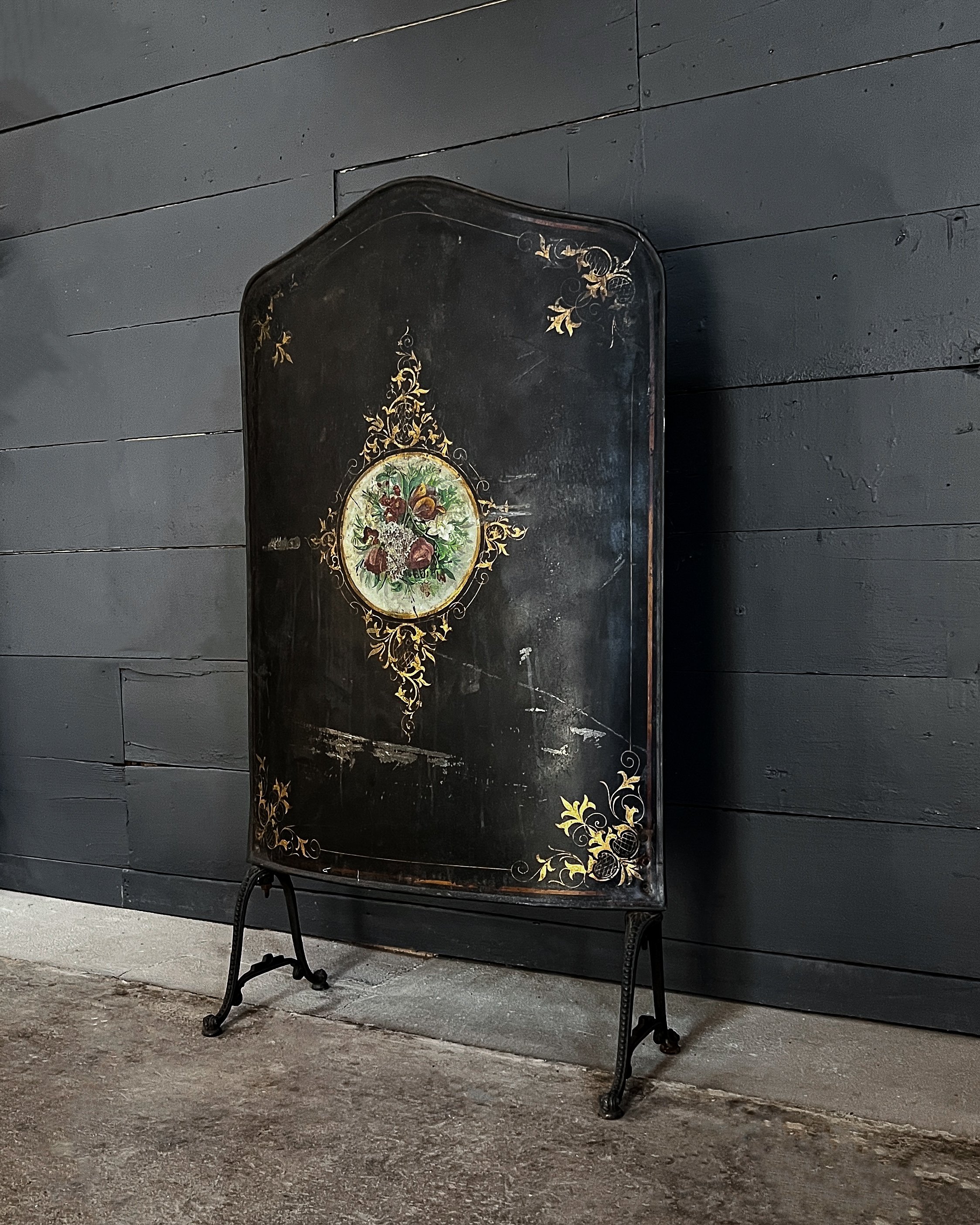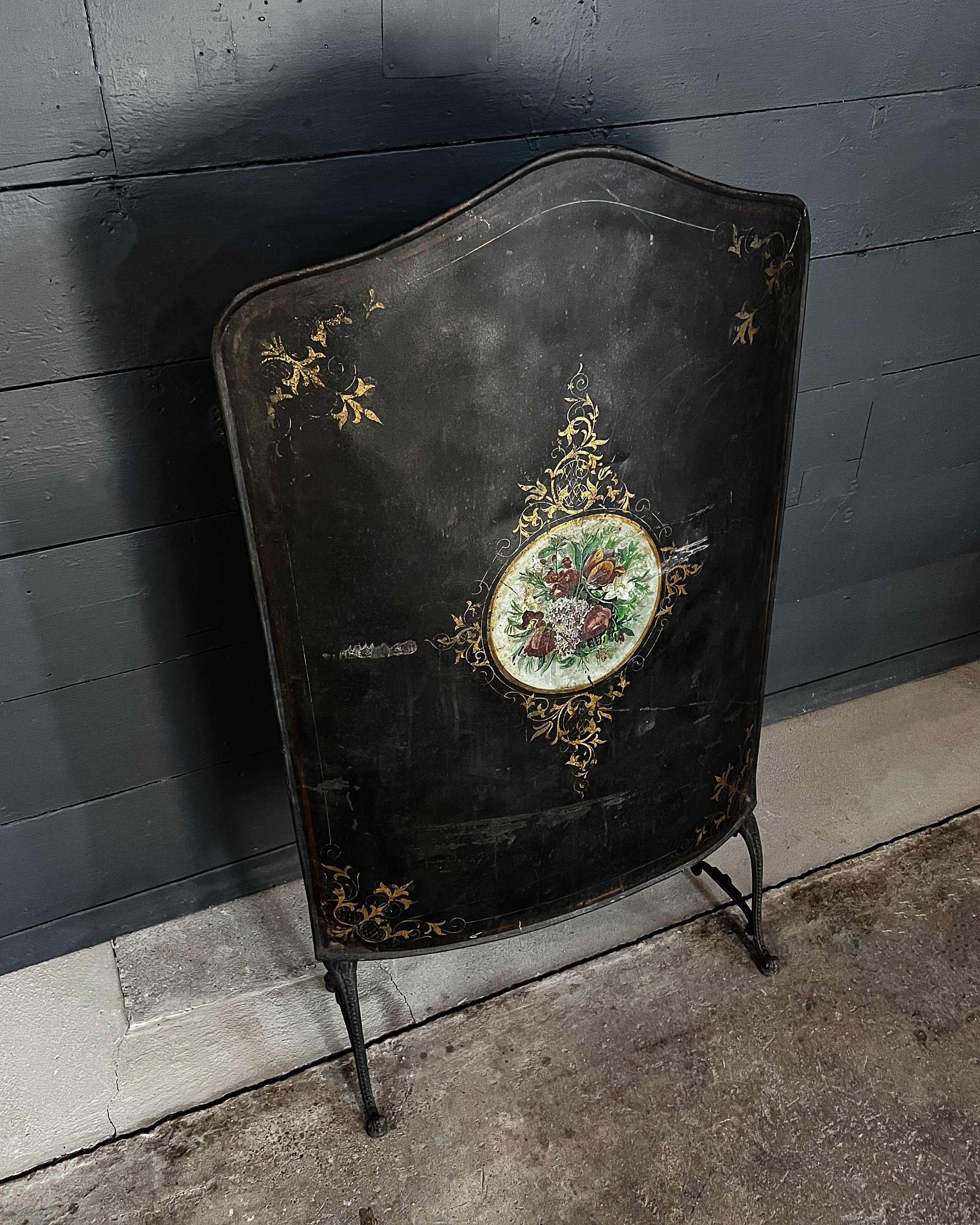Hand Painted Victorian Fire Screen
Once used to shield homeowners and their guests from extreme heat and burning embers, fire screens also served as mere decorative pieces covering the opening of a fireplace to improve the appearance of a room.
This beautiful Victorian tole fire screen features a charming curved shape with a hand-painted gilt filigree frame surrounding a lovely garnet and gold floral medallion in the center. Standing on decorative cast iron cabriole legs, the screen is not only functional but a beautiful objet d’art from a bygone era.
Dating to the 17th century, tole, or toleware, refers to decorative objects which are made of thin metal that has been lacquered and embellished with hand-painted designs. Coating the metal surface with a mixture of asphalt and shellac would prevent rust from developing on the metal surface. Developed by John Hanbury in Pontypool, Wales, the process is referred to as “japanning”, as the glossy surface resembles that of the lacquer on Japanese trays.
Found in England, circa 1850
Constructed of metal and iron with hand-painted details
Near perfect condition with some scratches
Overall wear consistent with age and use
Approximately 30” W x 11 1/2” D x 51 3/4“
Available for pick up, local delivery, and nationwide shipping.
Need help with an item? Email Us
Request a trade discount here.
Once used to shield homeowners and their guests from extreme heat and burning embers, fire screens also served as mere decorative pieces covering the opening of a fireplace to improve the appearance of a room.
This beautiful Victorian tole fire screen features a charming curved shape with a hand-painted gilt filigree frame surrounding a lovely garnet and gold floral medallion in the center. Standing on decorative cast iron cabriole legs, the screen is not only functional but a beautiful objet d’art from a bygone era.
Dating to the 17th century, tole, or toleware, refers to decorative objects which are made of thin metal that has been lacquered and embellished with hand-painted designs. Coating the metal surface with a mixture of asphalt and shellac would prevent rust from developing on the metal surface. Developed by John Hanbury in Pontypool, Wales, the process is referred to as “japanning”, as the glossy surface resembles that of the lacquer on Japanese trays.
Found in England, circa 1850
Constructed of metal and iron with hand-painted details
Near perfect condition with some scratches
Overall wear consistent with age and use
Approximately 30” W x 11 1/2” D x 51 3/4“
Available for pick up, local delivery, and nationwide shipping.
Need help with an item? Email Us
Request a trade discount here.
Once used to shield homeowners and their guests from extreme heat and burning embers, fire screens also served as mere decorative pieces covering the opening of a fireplace to improve the appearance of a room.
This beautiful Victorian tole fire screen features a charming curved shape with a hand-painted gilt filigree frame surrounding a lovely garnet and gold floral medallion in the center. Standing on decorative cast iron cabriole legs, the screen is not only functional but a beautiful objet d’art from a bygone era.
Dating to the 17th century, tole, or toleware, refers to decorative objects which are made of thin metal that has been lacquered and embellished with hand-painted designs. Coating the metal surface with a mixture of asphalt and shellac would prevent rust from developing on the metal surface. Developed by John Hanbury in Pontypool, Wales, the process is referred to as “japanning”, as the glossy surface resembles that of the lacquer on Japanese trays.
Found in England, circa 1850
Constructed of metal and iron with hand-painted details
Near perfect condition with some scratches
Overall wear consistent with age and use
Approximately 30” W x 11 1/2” D x 51 3/4“
Available for pick up, local delivery, and nationwide shipping.
Need help with an item? Email Us
Request a trade discount here.












